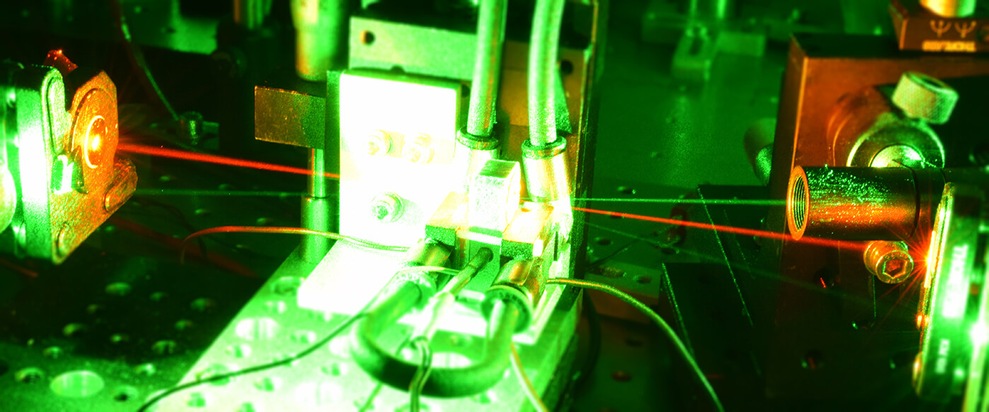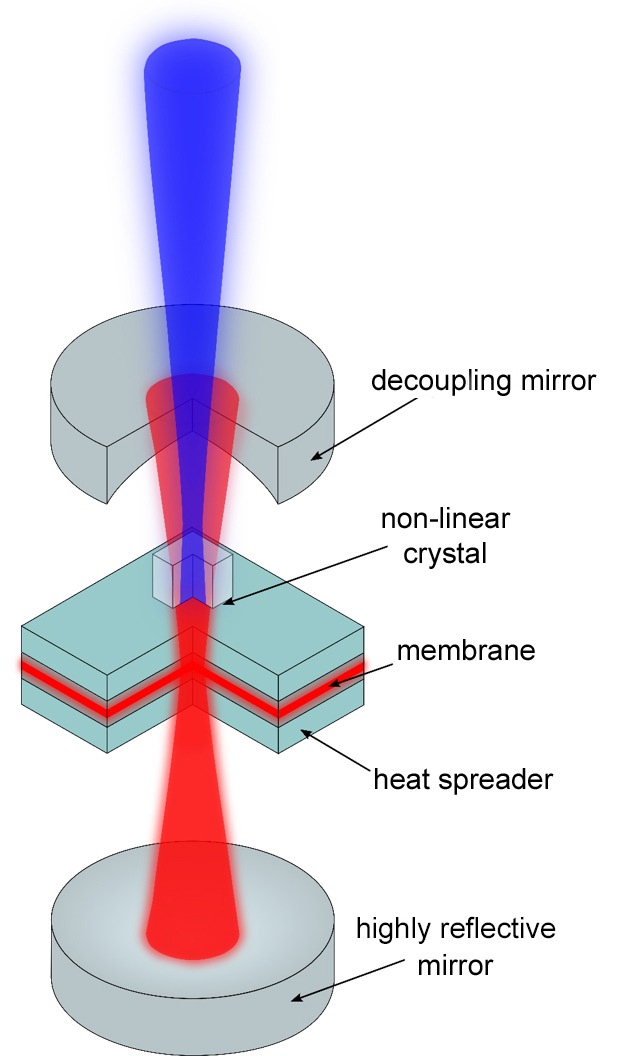Fraunhofer Institut für Angewandte Festkörperphysik IAF
Development of a novel membrane laser module for spectral measurement methods
The Fraunhofer Institute for Applied Solid State Physics IAF has partnered up with the start-up "Twenty-One Semiconductors" (21s) from Stuttgart to bring their unique laser concept from lab to practice. Having become a member of the high-tech incubator "FMD-Space" - initiated by the Research Fab Microelectronics Germany (FMD) - 21s has gained access to Europe's largest machine park in the field of micro- and nanoelectronics. As a part of the FMD, Fraunhofer IAF is supporting the young company with its expertise in the field of semiconductor laser technologies. They are working together to develop a novel, efficient and compact membrane laser module.
The Fraunhofer Institute for Applied Solid State Physics IAF and the start-up "Twenty-One Semiconductors GmbH" (21s) are developing a laser module that can be used in flow cytometry. This spectral measurement method has long been used as a routine procedure in medicine, where laser light irradiates cell suspensions. The resulting scattered light is different for each cell type and makes it possible to determine and count cells. This procedure requires laser modules with central wavelengths in the visible spectral range. The demand for such modules is growing and they find broad application in spectroscopy and fluorescence microscopy.
A novel laser concept for a "membrane external-cavity surface-emitting laser," MECSEL for short, will reach the desired frequencies in the ultraviolet range more efficiently and compactly than established laser modules. The idea for the innovative laser concept comes from the founders of 21s, who have joined forces with Fraunhofer IAF, in order to transfer the laboratory-proven concept of their MECSEL into industrial application. The aim of their cooperation project is to develop a market-ready laser module to be used in flow cytometry. The one-year FMD-Space project was launched at the beginning of 2020 and is supported by the Research Fab Microelectronics (FMD) and funded by the Federal Ministry for Education and Research (BMBF).
Improved heat management and output power through membrane lasers
At the heart of the MECSEL is an extremely thin semiconductor membrane, 40-times thinner than a human hair, embedded between two heat spreaders made of transparent silicon carbide layers. Due to its efficient heat dissipation, the membrane laser can generate red light with high output power, which in turn can be converted into ultraviolet radiation with only one intercavity frequency doubler. As a result, the MECSEL offers significant advantages over established laser modules that rely on two conversion levels to reach the desired wavelength, as it enables more compact and efficient laser components.
The functionality of the MECSEL has already been proven in laboratory setups. 21s has also successfully overcome the difficulty of scaling the complex production process of the semiconductor chip to an industrial wafer level. "The next step is to optimize the packaging technology and laser cavity as well as to develop a compact and stable laser module. Here, we rely on the cooperation with the experts at Fraunhofer IAF," explains Norbert Witz, CEO of 21s.
Laser technology expertise at Fraunhofer IAF
The scientists at Fraunhofer IAF have many years of experience in the development of semiconductor laser modules, including "vertical external-cavity surface-emitting lasers" (VECSEL), a laser technology very similar to MECSEL. In the past, the Institute succeeded in creating efficient and compact VECSEL modules with an extremely narrow line width of a few kilohertz at more than 1 watt of power. "We now have to apply the knowledge that we acquired in the field of VECSEL technology to the innovative semiconductor membrane of 21s to jointly bring the membrane laser from university research to the laser market," says Dr. Marcel Rattunde, project manager at Fraunhofer IAF.
Within the FMD-Space project, Fraunhofer IAF is optimizing the packaging technology of the MECSEL chip as well as designing an adapted pump optics and laser cavity. The technology is then put together in a stable module. In close cooperation with 21s, the laboratory setup of the MECSEL will be transformed into a compact and efficient prototype for industry, suitable for the medical application of flow cytometry.
Fraunhofer Institute for Applied Solid State Physics IAF Tullastraße 72 | 79108 Freiburg | Germany +49 761 5159-261 www.iaf.fraunhofer.de/en

